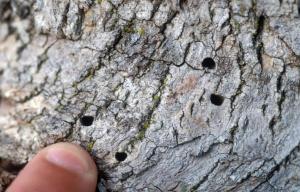The Hardy Ash Tree has Many Pests
A favorite tree of country landscapers and urban planners for its full canopy and wide variety of types, the Ash makes its home from New England to northern Florida. Given the right care, these trees can live for more than a century. But when the Ash falls victim to disease or pests it can die quickly, leaving a hull that easily topples into the road or yard.
The Ash needs full sunlight and moist soil, and should be planted at least 60 feet from other trees to give its extensive root system ample room to grow. While over-pruning will harm this tree, dead limbs should be removed quickly, before the first frost.
Emerald Ash Borer
The most deadly pest for the Ash is the Emerald Ash Borer. The adult beetle nibbles on the leaves and doesn't cause much damage, but the larvae bore into the tree and decimate its vascular system, killing it quickly. The Emerald Ash Borer has destroyed hundreds of millions of trees in the U.S. and has been detected across Pennsylvania.
 New infestations are difficult to detect, and may go unnoticed for as long as three years. Two of the ways to spot the presence of the beetle: It leaves a D-shaped hole in the bark when the adults emerge from the larval stage, and woodpeckers feast on the larvae — heavy woodpecker damage is often a sign of infestation. The USDA Forest Service and Michigan State University have built a website, emeraldashborer.info, that serves as a clearing house of information about the Emerald Ash Borer.
New infestations are difficult to detect, and may go unnoticed for as long as three years. Two of the ways to spot the presence of the beetle: It leaves a D-shaped hole in the bark when the adults emerge from the larval stage, and woodpeckers feast on the larvae — heavy woodpecker damage is often a sign of infestation. The USDA Forest Service and Michigan State University have built a website, emeraldashborer.info, that serves as a clearing house of information about the Emerald Ash Borer.
Treatment is challenging. While several insecticide options are available, it is difficult to successfully control under-bark feeders with chemicals. The Pennsylvania Department of Conservation and Natural Resources recommends on its website that only ash trees that are healthy and are of value to the homeowner should be considered for treatment. Other ash trees should be removed before they become a hazard.
Diseases
Several diseases can attack the Ash tree. Anthracnose causes defoliation and twig death, Ash Yellows causes cankers leading to dieback, and Verticullium Wilt is another cankerous disease that infiltrates bark and branches. Penn State University's Agricultural Extension has a full rundown on Ash diseases on its website at extension.psu.edu/ash-diseases. You can also use the search box at the top to explore their database for more Ash tree information.
What you can do
Homeowners can keep Ash trees alive and healthy for many generations with watchful care. Be aware of the signs of pests and disease, and have a tree replacement plan ready so you can act quickly — once stricken, death comes quick.
And don't forget the trees along the roadside in your maintenance plan — they are the homeowner's responsibility, and if they die, they pose a major hazard to the roadway and must be quickly removed.
With good care and vigilance, we can protect this important native tree for generations to come.


